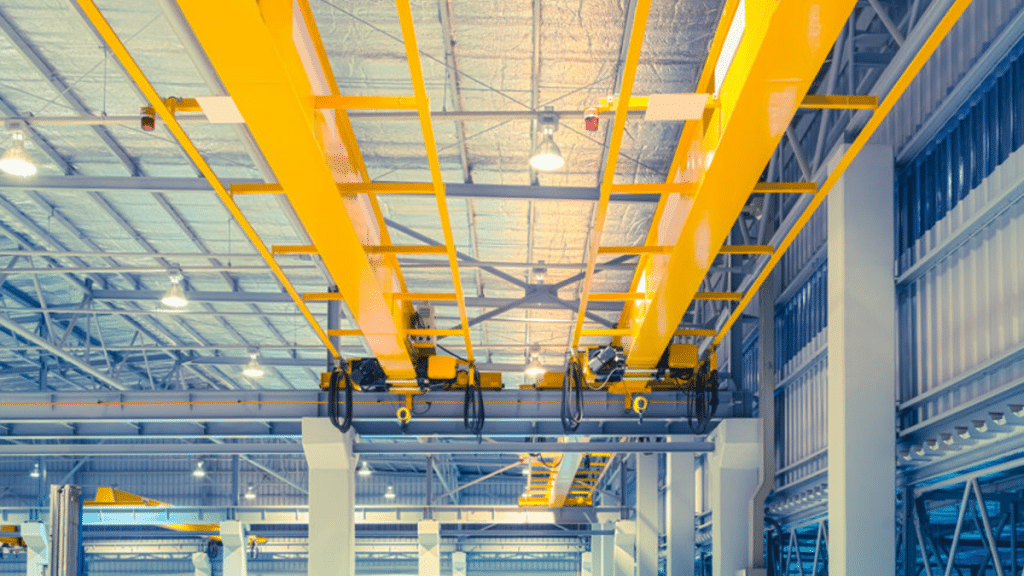Linear guide rails are crucial in businesses because they allow for the exact movement and positioning of heavy gear. The importance of safety in the design of these systems cannot be emphasized, as they are frequently integrated into production processes. Recent technological improvements have resulted in new safety measures in linear guide rails, which improve performance.
Thanks to these advancements, industrial environments are safer and more productive, because the chance of accidents reduces greatly. This article will discuss the most recent safety design advances, emphasizing how these advancements lead to safer, more efficient industrial environments. Understanding these new designs enables engineers, safety managers, and experts to make sound operating judgments.
The Importance of Safety in Linear Guide Rails
In industrial environments, where linear guide rails are frequently used at high speeds and weights, safety is of the utmost importance. Conventional designs have more wear, misalignment, and safety issues, which can lead to equipment failure and increase the chance of accidents.
Equipment can move easily and smoothly with linear guide rails, but any malfunction could seriously compromise safety. For example, a misaligned rail may result in machines operating erratically and perhaps causing accidents. Ensuring these components protects worker safety, maintains mechanical integrity, and lowers downtime and maintenance costs.
Modern Safety Design Innovations
Here are some recent advancements that have led to the development of modern safety designs that address these challenges.
Advanced Materials
The application of cutting-edge materials represents a significant advancement in linear guide rail safety. Despite the durability of traditional steel rails, they are prone to corrosion and wear, particularly in severe settings.
Modern designs use materials such as self-lubricating polymers and corrosion-resistant metals to improve longevity and safety. Plastics with built-in lubrication lower the chance of friction-related failure and require less regular maintenance. Corrosion-resistant metals extend rail life and reduce the risk of unexpected breakdowns in humid or chemical environments.
Enhanced Load Management
Contemporary linear guide rails are made to support heavier weights more effectively. These systems have improved load management capabilities, distributing weight uniformly throughout the rail and decreasing stress on individual components. This distribution is essential for maintaining the stability of the machinery and averting unexpected malfunctions. By minimizing deflection and guaranteeing exact alignment, these designs improve safety, particularly in high-speed or heavy-load applications.
Anti-Vibration Features
Vibrations are issues that happen daily in machinery, adding to wear and tear and reducing operational accuracy. Current linear guide rails have anti-vibration components that take in and release energy to keep the system stable. These characteristics increase equipment longevity and improve safety by lowering vibrations that may result in malfunctions.
Emergency Stop Mechanisms
By adding emergency stop and fail-safe devices to contemporary guide rail systems, safety is further improved. These devices enable immediate stopping of movement in case of emergency, averting mishaps and protecting both people and property. When a sensor notices an obstruction, an emergency stop kicks in, stopping the vehicle to avoid collisions. Proactive safety measures like this are crucial in automated systems where reacting quickly to possible threats is necessary.
Benefits of Implementing Modern Safety Designs
There are several advantages to using these contemporary safety solutions in linear guide rails. These include:
- Improved Workplace Safety : Due to improved materials, and load management features, there’s a lower chance of accidents, making the workplace safer for employees.
- Increased Equipment Longevity : Modern materials and anti-vibration features help equipment last longer and require fewer repairs and replacements.
- Enhanced Operational Efficiency : Better safety features provide smooth and continuous operations by reducing unplanned downtime and malfunctions.
- Cost Savings: By reducing maintenance needs and preventing accidents, companies can save on repair costs and potential liabilities.
Choosing the Right Modern Safety Design
When choosing modern safety solutions for linear guide rails, it is critical to examine the specific needs of your application. Consultation with a Manufacturer of industrial telescopic slides and linear guide rails can aid in selecting the appropriate materials and design. This is to meet your safety requirements. It’s also essential to maintain a safe and effective workplace to make sure guide rails meet industry safety standards.
Conclusion
Adopting new safety designs for linear guide rails helps to provide a safer and more efficient industrial environment. If you invest in these advanced solutions, it will increase overall efficiency and reliability in your operations.

